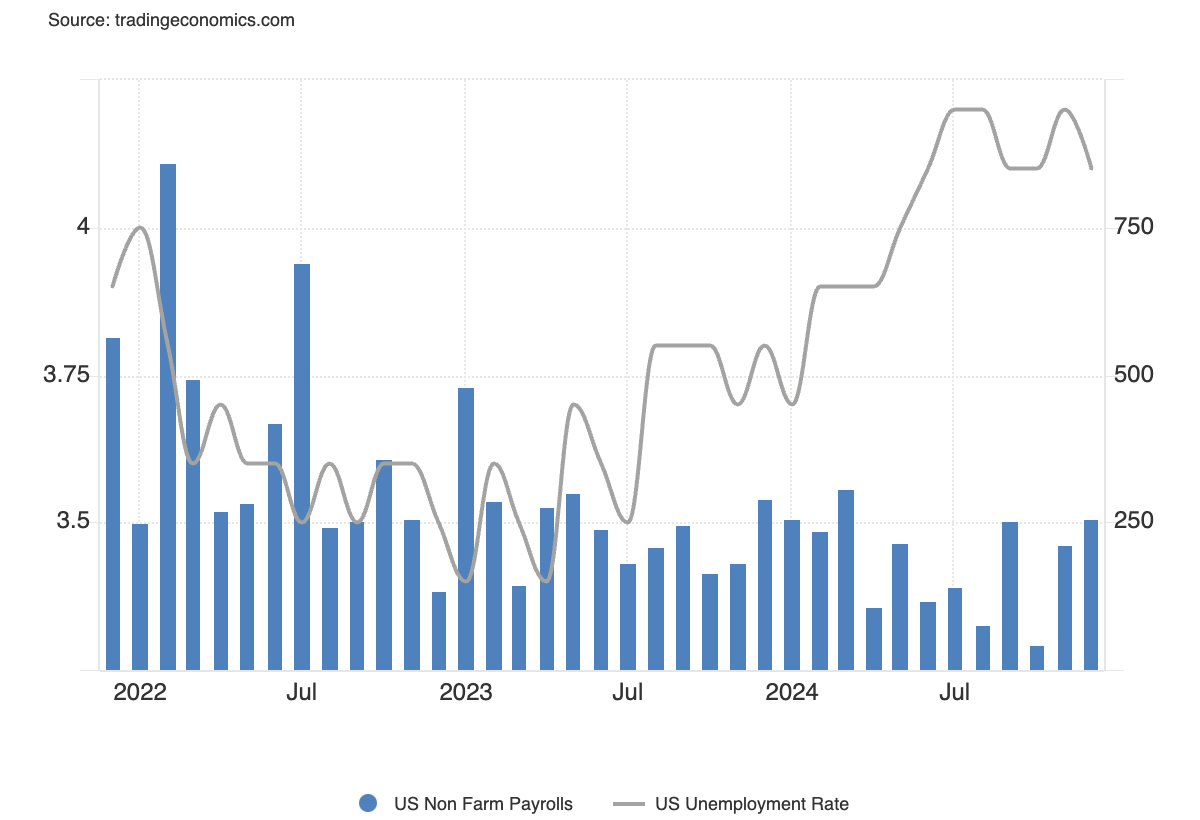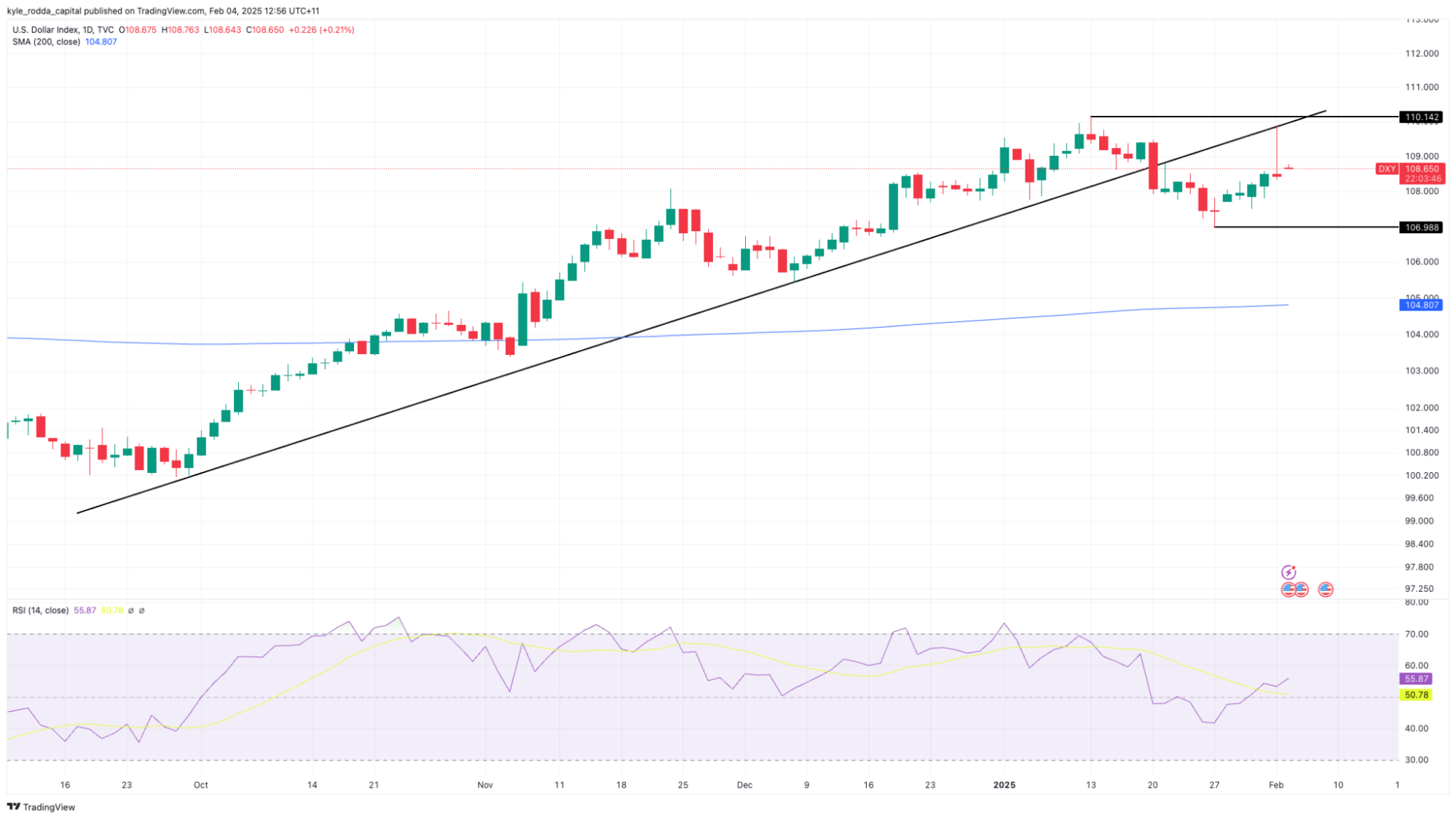US Non-Farm Payrolls predicted to show moderate employment growth in January
January’s US Non-Farm Payrolls are forecast to show a 169K job increase, with unemployment steady at 4.1%. Wage growth may ease, influencing Fed policy and market expectations.
Forecasters predict moderate jobs growth in the US economy in January. The consensus estimate for employment is an increase of 169,000 jobs, down from a month earlier but still enough to outstrip population growth, with the unemployment rate remaining steady at 4.1%. Average hourly earnings are tipped to ease from a month earlier to 3.8%.
The estimates point to an economy still growing strongly, albeit at a slightly slower pace. The unemployment rate remains around levels policy makers consider notionally full employment, although, judging by diminishing wage growth, without the tightness seen in previous years that pushed up wages and threatened driving inflation higher.

(Source: Trading Economics)
The data is expected to be consistent with the US Federal Reserve’s “wait and see” stance towards monetary policy. After a widely expected pause in rate cuts at last week’s FOMC meeting, the US Federal Reserve stressed the importance of incoming data and (implicitly) changing government policy to determine the next move for interest rates. Currently, the markets imply another rate cut from the Fed by mid-year, with another before the end of the year considered a slightly better than even chance.
The risks of a surprise in the NFPs could be skewed slightly to the upside. The latest GDP figures, released last week, while weaker than expected, revealed robust growth of 2.3% in the previous quarter. The latest US ISM Manufacturing PMI also rose by more than expected and returned to expansion for the first time since 2022. The markets will also gauge this week’s JOLTs figures and ISM Services PMI for clues about business activity, labour demand, and price pressures.
The impact of the Non-Farm Payrolls data may be dulled slightly because of the re-emergent risk of a global trade war, especially the US Dollar. The Greenback has surged because of US President Trump’s “America First” trade policies, keeping it in an uptrend despite slowing momentum. There are signs of exhaustion in the US Dollar Index, with its recent rally failing to break resistance at previous trend line support. Short-term resistance appears to be around 110, with short-term support around 107.

(Source: Trading View)
(Past performance is not a reliable indicator of future results)